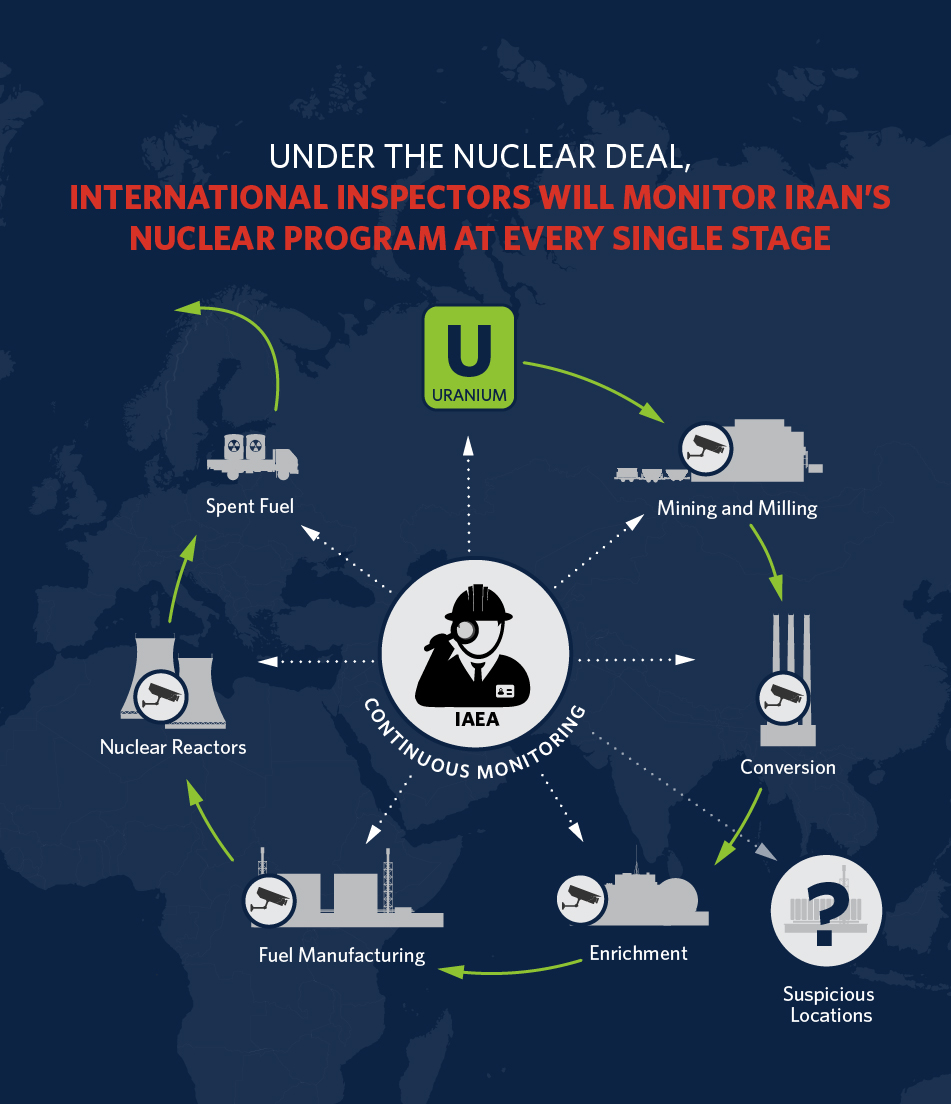How Much Money Did Iran Get In The Deal
Building a nuclear bomb requires either uranium or plutonium, but thanks to this deal, Iran's four possible ways to leverage those fissile materials are blocked.
Let's look into Uranium:
Iran would need two key elements to construct a uranium bomb: enough highly enriched uranium to produce enough material to construct a uranium bomb and tens of thousands of centrifuges.
Currently, Iran has a uranium stockpile to create 8 to ten nuclear bombs. But thanks to this nuclear deal, Iran must reduce its stockpile of uranium by 98%, and will keep its level of uranium enrichment at 3.67% — significantly below the enrichment level needed to create a bomb.
Iran also needs tens of thousands of centrifuges to create highly enriched uranium for a bomb. Right now, Iran has nearly 20,000 centrifuges between their Natanz and Fordow uranium enrichment facilities. But under this deal, Iran must reduce its centrifuges to 6,104 for the next ten years. No enrichment will be allowed at the Fordow facility at all, and the only centrifuges Iran will be allowed to use are their oldest and least efficient models.
In short, here's the difference this historic deal will make:

Let's look into Plutonium:
The third way Iran could build a nuclear weapon is by using weapons-grade plutonium. The only site where Iran could accomplish this is the Arak reactor, a heavy-water nuclear reactor. Right now, this reactor could be used in a weapons program, but under this deal, the Arak reactor will be redesigned so it cannot produce any weapons-grade plutonium. And all the spent fuel rods (which could also be source material for weapons-grade plutonium) will be sent out of the country as long as this reactor exists. What's more, Iran will not be able to build a single heavy-water reactor for at least 15 years. That means, because of this deal, Iran will no longer have a source for weapons-grade plutonium.
Could there be a covert pathway to Iran building a secret nuclear program?
The previous three pathways occur at facilities that Iran has declared, but what if they try to build a nuclear program in secret? That's why this deal is so important. Under the new nuclear deal, Iran has committed to extraordinary and robust monitoring, verification, and inspection. International inspectors from the International Atomic Energy Agency (IAEA) will not only be continuously monitoring every element of Iran's declared nuclear program, but they will also be verifying that no fissile material is covertly carted off to a secret location to build a bomb. And if IAEA inspectors become aware of a suspicious location, Iran has agreed to implement the Additional Protocol to their IAEA Safeguards Agreement, which will allow inspectors to access and inspect any site they deem suspicious. Such suspicions can be triggered by holes in the ground that could be uranium mines, intelligence reports, unexplained purchases, or isotope alarms.
Basically, from the minute materials that could be used for a weapon comes out of the ground to the minute it is shipped out of the country, the IAEA will have eyes on it and anywhere Iran could try and take it:

How Much Money Did Iran Get In The Deal
Source: https://obamawhitehouse.archives.gov/issues/foreign-policy/iran-deal
Posted by: blankenshiphoure1985.blogspot.com

0 Response to "How Much Money Did Iran Get In The Deal"
Post a Comment